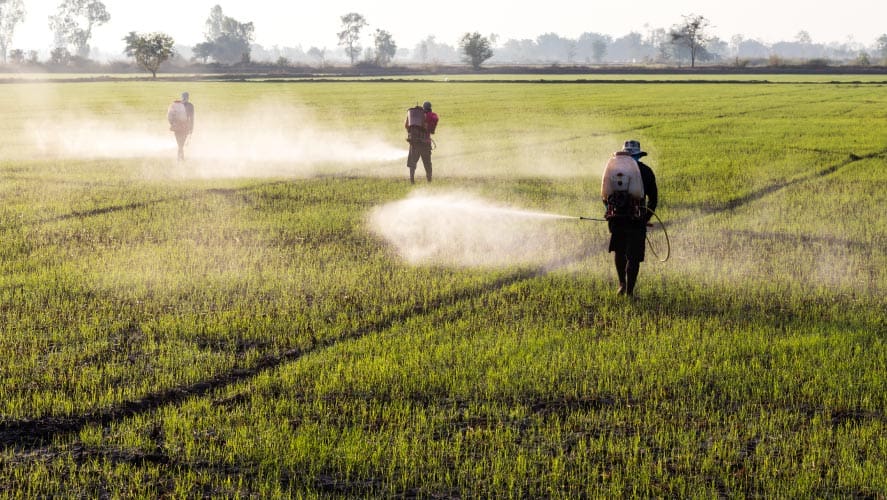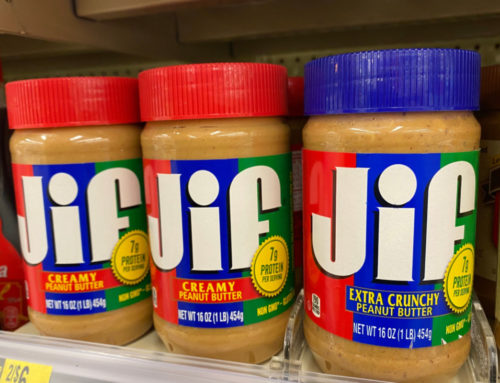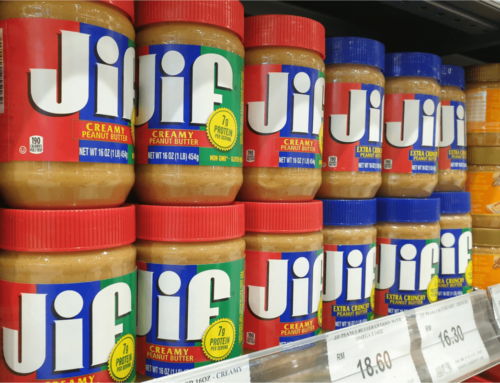
The decades long debate over whether glyphosate, the leading ingredient in Monsanto’s Round-Up and number one herbicide worldwide, causes cancer is coming to a head in the monumental case of Edwin Hardeman V. Bayer (the company that recently purchased Monsanto). Recently in San Francisco—in the first of two trials—the U.S. district court jury unanimously ruled in favor of Edwin Hardeman, who claims that exposure to the chemical glyphosate is the cause of his cancer. The German chemical producer, Bayer, who just bought Monsanto last year for $62.5 billion, is now facing the dirty laundry of the company’s past. Controversial studies over the years have produced conflicting evidence on the chemical’s connection to non-Hodgkin lymphoma, an immune system cancer, and the future is looking bleak for the chemical.
Hardeman faced long-term exposure to the chemical after using it for 26 years to suppress poison oak and control weeds on his property. He was diagnosed with non-Hodgkin lymphoma (NHL) in 2015, in the midst of a growing debate about glyphosate. His case has been bifurcated into two trials—the first of which ended in a unanimous jury verdict and victory for Hardeman. This first trial established causation, with the court finding that the chemical was an important factor in Hardeman’s development of the cancer. The next trial will determine Bayer’s liability. The case is the first of a larger multi-district litigation process that has worked to compile over 760 pending lawsuits against Monsanto. If Hardeman wins in both of his trials, the road will be paved for forthcoming lawsuits.
While this multi-district litigation process is a big deal, it is not the first court case targeting the connection of glyphosate to cancer. These court cases come on the heels of another high-profile case between Dwayne Johnson and Monsanto in 2018. Dwayne Johnson, a retired school groundskeeper, was the first person to take Monsanto to trial under accusations that Monsanto was hiding the cancerous effects of the weed killer, glyphosate. He was also the first to win. Johnson’s trial was expedited at the time because his life expectancy was considerably diminished due to his cancer. The case was a huge blow for Monsanto, with the jury finding that payment of $289 million was owed to Johnson. Although this number was diminished to $78 million by the judge, the case ultimately paved the way for the consideration of future cases brought against Monsanto, and now Bayer.
The Research
Part of the development of this case and clarity on glyphosate comes from a thorough and leading meta-analysis of epidemiological research executed by the University of Washington in February of this year. The comprehensive study sought to identify broad trends associated with the effects of glyphosate by compiling analysis of studies and research on the chemical. The study concludes that large exposure to the chemical is associated with a 41% increased relative risk of developing NHL. This means that individuals with high exposure are 41 times more likely to develop NHL than those who are not exposed. The study also found the risk of developing the disease to be 0.8% higher for those exposed to the chemical. While these numbers may be confusing, the research results conclude there is a compelling link based on the number of people using and exposed to glyphosate.
The longstanding controversy and confusion on glyphosate comes from the decades of conflicting conclusions drawn by the scientific community and leading health and regulatory organizations in the U.S. and abroad. Since the mid-1970s, when glyphosate was originally introduced as an herbicide, its use has been categorically permitted by regulatory agencies. The Environmental Protection Agency (EPA) has found the chemical unlikely to cause cancer and has continued to maintain this position as recently as December of 2017. Likewise, Health Canada has upheld a similar conclusion, as well as the European Food Safety Authority. It was not until 2015 when the World Health Organization’s International Agency for Research on Cancer concluded that the chemical was likely to be instrumental in causing cancer, and the International Agency on Cancer (IARC) concluded that it was to be classified as a group 2A chemical and therefore “probably carcinogenic to humans” that the seal of approval was broken.
Ironically, one of the findings of the meta-analysis by the University of Washington concludes that the risk factor of contracting cancer associated with the use of glyphosate is above the EPA’s determined level of approval. The EPA asserts that a risk factor must not exceed 1/1000, meaning that no more than one out of 1,000 people must contract the associated ailment when in contact with the chemical. The University of Washington study concludes that 8/1000 people will be afflicted with cancer when associating with the chemical in an industrial situation.
Bayer is feeling the repercussions of the lawsuit and has recently experienced a significant slide in company shares, seeing a 12 percent drop, which equates to roughly 9.1 billion dollars and is the largest swing in a single day in over a decade. Bayer has also published an article that describes glyphosate as a safe and well-studied herbicide, citing the EPA’s assessments as validation along with studies that have been conducted over the years.
World Trends
The fight against glyphosate is shifting as regulatory agencies come to new conclusions and lawsuits surface. The number of countries banning, restricting or working toward banning glyphosate is growing—currently resting at 27 countries worldwide. In many of these countries, people are taking action to restrict glyphosate use in cities and coming together in professional groups to advocate for banning or restricting its use. In 2018, India banned all sales of the chemical and a number of South American countries have also made efforts to ban or stop its use. Brazil, the number one supplier of soybeans, is in legal turmoil over the matter and Argentina has some strong grassroots efforts making a big impact on the issue. While these efforts are spreading, the European Union will not review the use of glyphosate until 2022, as it was just renewed last year for another 5 years. The EU’s position has not stopped many EU countries from creating their own regulations, however. France is working to reduce the use of the chemical and has placed bans on use, distribution and sale of some forms of the chemical. Likewise, Germany has also made moves to stop the distribution of the chemical and Luxembourg and Belgium have both been a part of efforts to create an “exit plan for glyphosate” for the EU, along with France, Greece, Slovenia and Malta.
Moving Forward
While the debate over glyphosate is not over, it is certainly shifting both nationally and globally. What happens in these upcoming trials and lawsuits will undoubtedly have a profound effect on the use of the chemical worldwide. As litigation announces new verdicts, new legal paths are plowed, and future outcomes will change.
If you or a loved one developed non-Hodgkin’s lymphoma after exposure to glyphosate or Roundup, contact our experienced and knowledgeable team of personal injury attorneys to determine whether you may be entitled to compensation.







